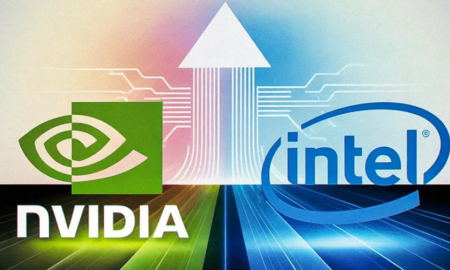
Some Lending Terms You Need to Know as an Entrepreneur

Like launching into new territory, an enthusiastic entrepreneur in search of funding may continuously come across different and unfamiliar lending terms. A lack of understanding of these terms may do more harm than good to the entrepreneur’s chances of making the right decision. Thus, below are simple analyses of some common lending every entrepreneur ought to know.
1. Annual percentage rate.
Also known as APR, the Annual Percentage Rate connotes the yearly cost of loan gotten. Although it is expressed in the form of percentage similar to the interest rate paid on loan, the APR is a more detailed and comprehensive projection of the cost of the loan.
The interest rate is just a part of what will be included in your APR, as it also includes other costs such as documentation fees and origination fees. APR offers vary from one lender to another and are also dependent on the particular loan package you want as well as your borrowing history. Thus, before taking that loan, ensure that you put the APR into consideration.

APR is a more detailed and comprehensive projection of the cost of the loan.
2. Income statement.
This is also referred to as the profit and loss statement. When you are asked to produce your income statement, reference is being made to a document that outlines and indicates the net income, revenue and also expenses of the business over a given period, be it quarterly or yearly.
The income statement is a necessity when filing a loan application as it details the extent of your business’ financial strength and helps the lender determine your business standing. As an entrepreneur, you can prepare the income statement by yourself or better still get an accountant to provide professional assistance. Income statements contain different financial terms as well, and it is essential to understand these terms if you decide to prepare it on your own
3. Collateral
In simple terms, collateral refers to any asset pledged to the lender as security for a loan. The essence of a collateral is to reduce the risk which the lender will bear in a case where you default in fulfilling your end of the loan agreement. Assets used as collateral are anything that can be liquidated by the lender in a case of default on your part. Such assets include inventory, real estate, equipment, among others.
There are two types of loan based on whether or not collateral is provided. We have the secured and unsecured loan. If you want to take out a secured loan, you will be required to present a collateral during your application, but for unsecured loans, collateral is not needed. However, unsecured loans have higher rates.

Assets used as collateral are anything that can be liquidated by the lender in a case of default on your part
4. Personal guarantee
Agreeing to a personal guarantee during the application for a loan means you are committing to taking personal responsibility for your debt if there is a default. This security of loan gives the lender the right to seize your personal assets if you fail to pay back the loan. Such assets include your house, car and even retirement fund.
There are two types of this personal guarantee; the limited and the unlimited personal guarantee. While limited personal guarantee places a limit on the amount that can be collected, unlimited personal guarantee makes it possible for a lender to come after you until the full repayment of debt. It is advisable to seek out legal professionals before the acceptance of loans with personal guarantees because they often contain vague and confusing words.
5. Term loan.
Term loans refer to the lump amount of cash in addition to interest that you have to pay back over a definite period. While traditional term loans give longer payment duration and lesser sums to be repaid monthly, short-term loans and other emergency financing have different terms.
To secure a term loan, your business needs to exhibit a very high level of creditworthiness. Thus, there may be difficulty securing a term loan with a traditional lender if the business is still young, has a weak credit or poses any form of risk to the lender.
6. Small Business Administration Loan
SBA loans provide lower costs and longer terms than the traditional term loans because the U.S. government guarantees a part of the loan. The loans are specially set up to allow owners of small business to access very affordable financing while building their business
7. Line of credit.
This form of lending gives the borrower what is known as revolving credit which allows the borrower borrow a sum and pay back the sum continuously while remaining within a maximum amount. A line of credit, unlike loans, provides you with the needed capital and you are only required to pay back interest on the sum withdrawn from time to time.
More in Advisor
-
`
Will Bitcoin Crash to $0 or Hit $500K in a Decade?
Bitcoin’s future divides analysts into two extreme camps. Some see it becoming one of the most valuable financial assets in history....
October 12, 2025 -
`
Can Anyone Really Blame Mariah Carey for ‘Leaving’ the Real World?
Mariah Carey isn’t like the rest of us. From the moment she opens her mouth and that voice pours out, she...
October 10, 2025 -
`
Intel Invests in Nvidia, but Ratings Remain Unchanged
Intel’s stock jumped more than 30% after news broke that Nvidia poured $5 billion into the company. The rally sparked renewed...
October 5, 2025 -
`
Homeownership vs. Real Estate Investment: What’s Better?
Homeownership has long been seen as the American dream. But today, more people are asking: Is it really the smartest way...
October 3, 2025 -
`
Why the Armani Fashion Empire Is Set for an IPO
Giorgio Armani, one of the most iconic names in global fashion, left behind a detailed plan for the future of his...
September 27, 2025 -
`
Why Do Pokémon Cards Outperform the S&P 500 As an Investment?
Pokémon cards have outperformed the stock market by a mile. Since 2004, they have delivered a staggering 3,821% return, according to...
September 27, 2025 -
`
America’s Billionaires Get Older—Millennials Wait for Wealth Transfer
Many of today’s billionaires don’t match the youthful tech-founder image often portrayed. While names like Elon Musk, Sam Altman, and Mark...
September 21, 2025 -
`
Can President Trump Legally Fire Fed Governor Lisa Cook?
Lisa Cook is right in the middle of one of the most explosive legal battles in Washington. President Trump wants her...
September 20, 2025 -
`
Jeff Bezos’ Advice for Millennials Who Want Financial Success
Millennials today have grown up in a world where instant access to products and services is the norm. From two-day deliveries...
September 13, 2025















You must be logged in to post a comment Login